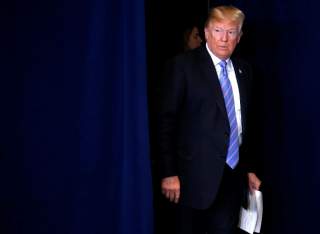A Joint Vision Statement for Trump and Kim
Trump’s unconventional approach to international relations, especially when dealing with North Korea, means an unconventional outcome is probable on June 12.
It certainly would be preferable if a vision statement outlined a timetable with specific first steps required by North Korea, like an initial down payment, to credibly show its commitment to denuclearization and corresponding U.S. measures. It would still be a success if such measures were specified in a separate document, but it would also be a good outcome if these delicate and highly technical details were negotiated in follow-on meetings. First steps could include many scenarios such as credibly dismantling some enrichment and reprocessing facilities or perhaps even shipping some nuclear weapons abroad in a short period of time as recently suggested by Bruce Bennett. But the trickier part would be providing corresponding U.S. measures that are reasonable and proportionate in Washington’s eyes and satisfactory in Pyongyang’s eyes.
It is common for some diplomatic communiques to agree on the lowest-hanging fruit or abstract language, although the aim is to always negotiate for as many details as possible and be as ambitious as possible. Both sides will enter with their maximalist demands and remain there as long as possible. At the same time, language is just as important as their intended meanings in political documents. One risk this time, with the stakes so high, is walking away with two different understandings of the same agreed text, which is no stranger to past deals with North Korea. At a minimum, Washington cannot afford to strike a deal with Pyongyang without agreeing on a common definition for denuclearization, missiles and space-launch vehicles.
Duyeon Kim is a visiting senior research fellow at the Korean Peninsula Future Forum based in Seoul and a columnist for The Bulletin of the Atomic Scientists. She was an associate in the nuclear policy and Asia programs at the Carnegie Endowment for International Peace; the deputy director for non-proliferation at the Center for Arms Control and Non-Proliferation; and a diplomatic and security correspondent for South Korean media covering the Six Party Talks and inter-Korean relations.

